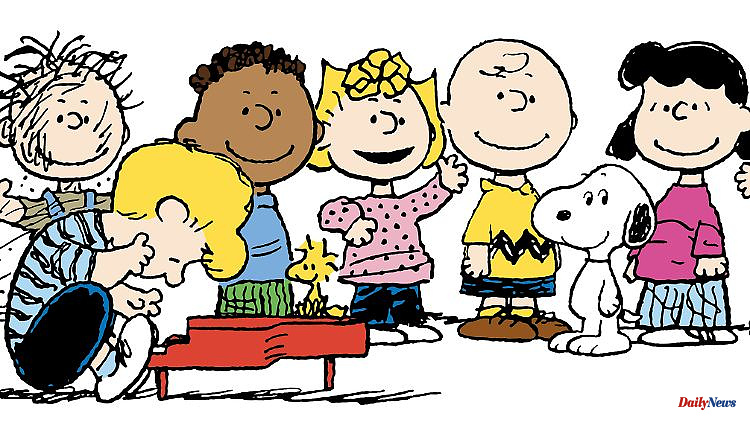Even as a child, Charles M. Schulz only knew one goal: his own comic strip. The draftsman, who was born 100 years ago, has achieved this. Even long after his death, the "Peanuts" in which Schulz immortalized himself live on.
Charles M. Schulz met several people named Charles Brown when he was young. From them he borrowed the name for his most famous comic book character: Charlie Brown. The boy with the yellow and black shirt and his dog Snoopy are the focus of what is probably the most famous comic strip, the "Peanuts". For almost 50 years, Schulz drew the adventures of Charlie and his friends - "Peanuts" was an affectionate euphemism for children when the strip was created in 1950. The final strip appeared just hours after the artist's death in February 2000.
More than 20 years have passed since then, but the "Peanuts" are as present as ever - even now that their creator would have been 100 years old on November 26th. Old strips are still being printed in a number of newspapers, and merchandise ranging from T-shirts to pillows and mugs is still available for purchase. Even new films and animated series are created with the participation of the cartoonist's widow and children.
The "Peanuts" have lost none of their humor. And nothing of their actuality. Almost timelessly, the strip series tells of the everyday life of a group of children, of their friendship, their solidarity, but also of fears and hardships. "Sparky was about humanity, what it means to have friends, arguments, disappointment and joy," says the artist's widow, Jean Schulz, of the German Press Agency. She preserves the memory of her husband, which also includes the Charles M. Schulz Museum in Santa Rosa, California.
But Schulz's success did not come about by chance. Even as a child he dreamed of being able to draw his own comic strip, as comic expert Andreas C. Knigge writes in the extensive homage volume "... And Charles M. Schulz created the Peanuts", which was published in January is published by Carlsen and, in addition to numerous strips, also contains some texts about the work. In his detailed biographical essay, Knigge describes Schulz's career, who worked hard for his dream for years and didn't let the global economic crisis, military service or the many refusals from publishers get him down.
However, one also learns about his German roots - the father was born in Stendal -, about the constant support of his parents, who put their scarce money into their son's draftsman training, and about the many inspirations that were later found in the " Peanuts", including not least the names of the main characters.
But it wasn't just tenacity and perseverance that made Schulz one of the most successful comic artists, whose almost 18,000 strips were printed in more than 2,600 newspapers and read by more than 355 million people in 75 countries. Added to this was his shy nature, which, however, was always accompanied by fears. Schulz loved to sit alone in the quiet little room at his drawing board. Even after his strip had long been a worldwide success, he never lost his curiosity or his feet on the ground - since childhood friends simply called him "Sparky", after a comic book character.
The draftsman also incorporated his character traits into his protagonists. "Anyone who follows the strip for a few weeks knows me, because everything that I am flows into the strip, that's me," said Schulz once. The insecurity and seriousness of Schulz' childhood are reflected in Charlie Brown, his love of drawing and fantastic worlds are reflected in Snoopy, who would like to be a world-famous author, but also appears as an ace pilot in the First World War. Added to this are Lucy's sarcasm and Linus' penchant for philosophy and religion - they also represent characteristics of their creator.
But the strip is also characterized by the fact that it doesn't turn its characters into small adults - they hardly play a role in this universe. It's rather the other way around: the joys, problems and fears that the children have hardly differ from those of their parents. They too experience lovesickness and frustration, go through adventures or pull themselves together again after defeats. Many readers can find themselves in it, as well as in the typical American suburban settlement in which the strip mostly takes place.
What "Peanuts" fan wouldn't want to play baseball with Charlie Brown, listen to Schroeder play the piano, or seek psychological advice from Lucy at the wooden stand. Precisely because he drew on his own childhood, on his own adventures and experiences, Schulz created characters whose kindness and quirkiness everyone can relate to. The artist once said he just wanted to be remembered as someone who drew a good comic strip. 100 years after his birth, a good 20 years after his death, this wish has come true.












